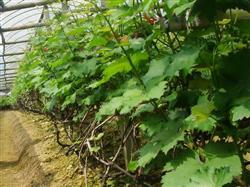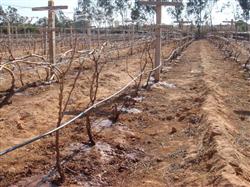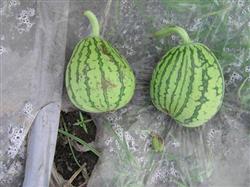Guide to Technical knowledge of Spring Grape Management

Spring is the season for grape bud and leaf development, branch elongation, heading and flowering. Strengthening grape management in spring can improve grape yield and quality. 1. Germination period from mid-late February to early March: irrigation of germination water and application of quick-acting nitrogen fertilizer. The orchard with conditions at this stage should be irrigated in time to ensure that the germination is neat. At this time, flower buds continue to differentiate and new shoots begin to grow vigorously, requiring a lot of nutrients, so the application of decomposed human feces mixed with 0.2% urea. The amount of fertilizer applied this time accounts for about 15% of the whole year. February, March to late April: shoot fixing, bud wiping, flower ear treatment and pest control. After winter pruning, the winter buds on the fruit mother branches usually have 70 to 80 percent germination, at this time should pay attention to the buds. Too many buds, easy to waste nutrients, weak tree potential, not conducive to fruit; but if too few buds, easy to promote vigorous growth of branches, easy to serious flower drop fruit, so pay attention to wipe buds fixed shoots. Wipe bud: Usually a fruit mother branch has a number of buds germination, every 15~20 cm to leave a bud, each fruit mother branch to leave 2~5 new shoots, the rest from the base wipe. Wipe bud, generally wipe out the double bud without flower ear bud or weak bud, a bud eye only leave a shoot. Of course, in order to ensure yield, it can also be decided whether the first silk roll has flowers or not when the new shoots grow to 4~5 leaves, but this wastes more nutrients. Fixed shoots tied tendrils: the new shoots retained before flowering leave 5 leaves above the flower spike, while there are no flowers slightly leave 8 leaves to pick. After pinching, all accessory shoots germinated in large quantities, leaving only 1~2 accessory shoots at the top and 2 leaves repeatedly pinching, and the rest accessory shoots were all wiped off. At the same time, according to the growth of vines timely tie vines. The treatment of flower ear: in order to ensure the fruit setting rate, 1/5 of the ear tip of flower ear is usually removed manually, and 0.3% boron fertilizer plus 0.5% urea is sprayed at flowering stage. 5 days after flowering for fruit trees with more fruit, artificial thinning, and then bagging protection. Intertillage weeding and disease control: grape germination 3~5 leaves began to prevent disease, every 7~10 days spray new lipid membrane 600-800 times once, especially after the rain to strengthen spray protection, and pay attention to intertillage weeding. This period is mainly to prevent grape black pox, gray mold, rust and so on. If the bacteria have occurred, common drugs can be used, carbendazim 800 times + new lipid membrane 600-800 times liquid treatment.
- Prev

Drip Irrigation Technology of Grape in greenhouse
Drip irrigation is the most ideal technology for grape irrigation in greenhouse. It has the advantages of water saving, increasing production, cooling, labor saving and high efficiency. First, simple drip irrigation production: build a storage tank with a capacity of 3-5 cubic meters and a height of 1-3 meters at the head of the shed, install gate valves and water meters at the outlet of the pool, and use 38 mm plastic pipes to make capillary tubes in the shed.
- Next

The reasons for the difficulty of setting fruit and many abnormal fruits of watermelon
In the process of watermelon production, due to the influence of adverse factors, it is often difficult to set melon and have many abnormal fruits, which reduces the yield and commerciality, and directly affects the income of growers. The reason why it is difficult for watermelon to set fruit is as follows: in the period of watermelon blossom and fruit setting, there are high temperature and high temperature in abnormal climatic conditions.
Related
- Moge, come on! The staff of the peasant association in the producing area of cantaloupe were frightened when the crowd gathered.
- Causes and Solutions of low Fruit setting rate of Apple
- Symptoms and control measures of passion fruit virus disease
- Fruit growing lesson: how do apple orchards keep high yields?
- Can you build orchards in the mountains? What are the pros and cons?
- How to manage the coloring period of Crisson grape?
- This paper introduces the processing technology of two kinds of fig products.
- How much is a month for retired teachers in rural areas by 2020?
- How can strawberry planting increase sugar content? We should pay attention to management in many aspects.
- What are the cultivation techniques on how to improve the yield of golden fruit?

